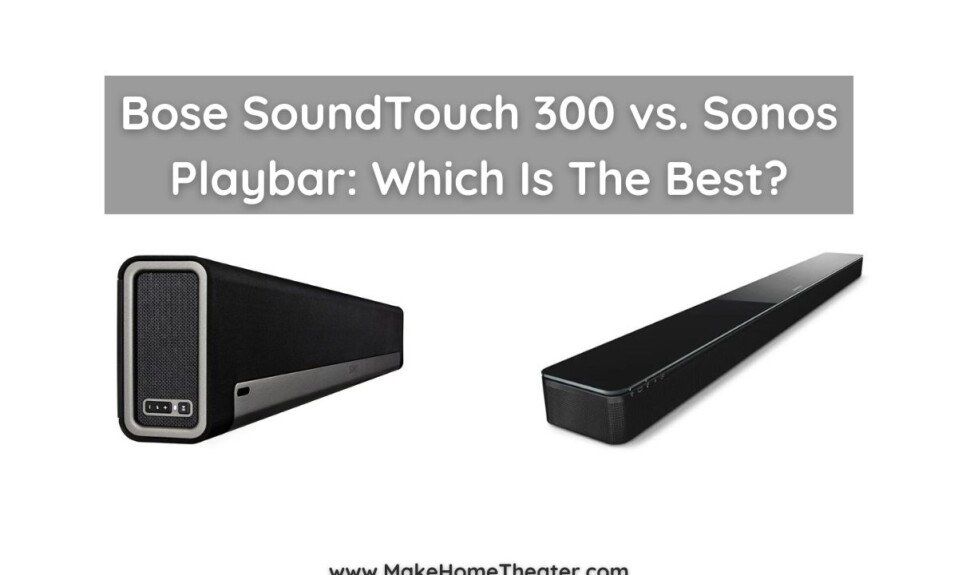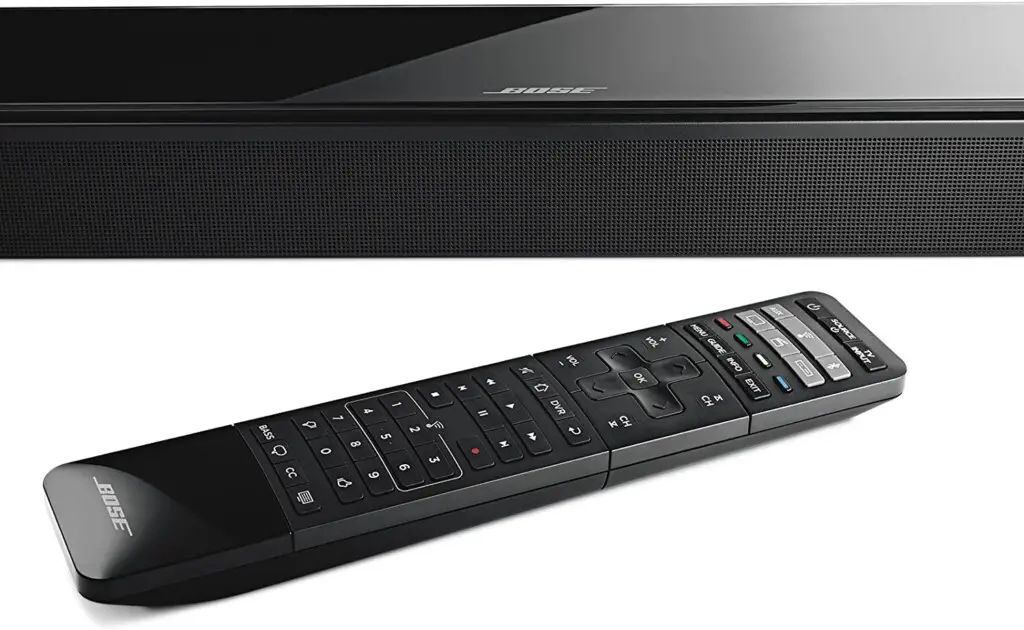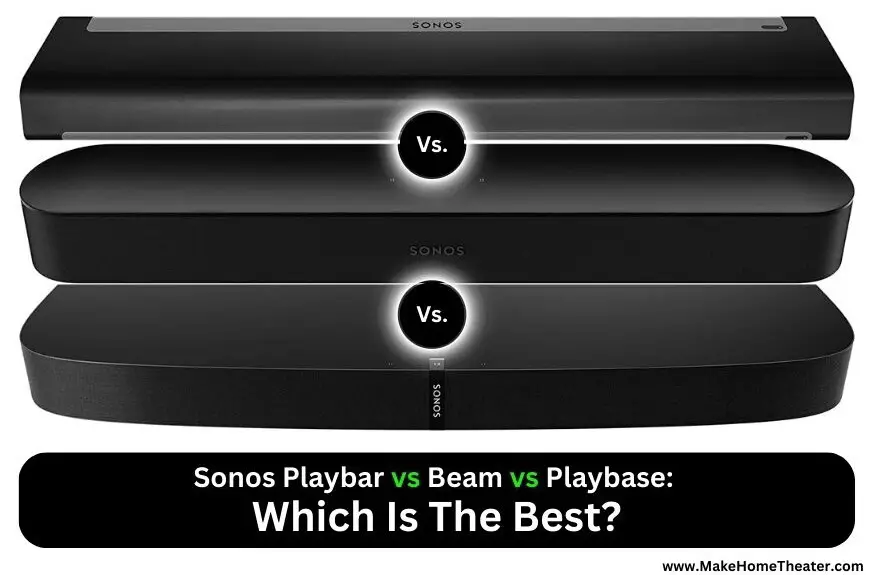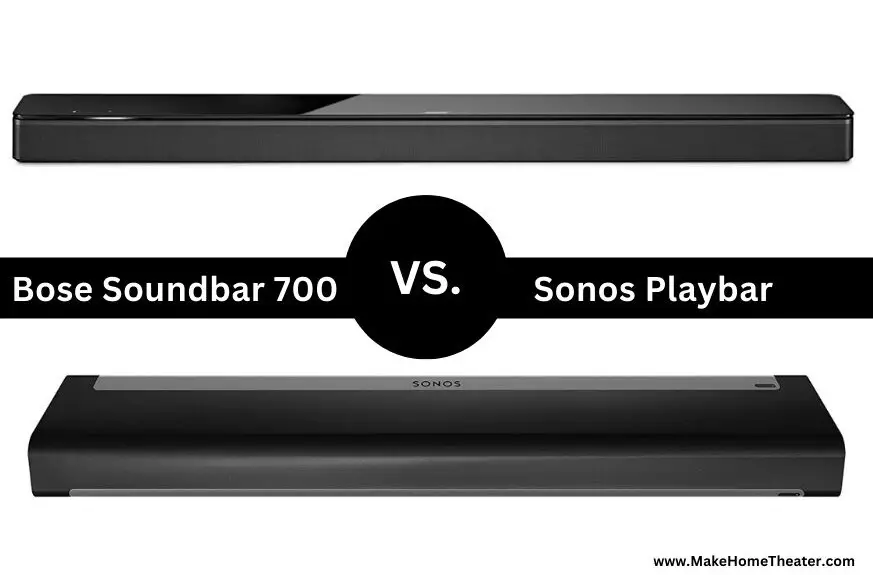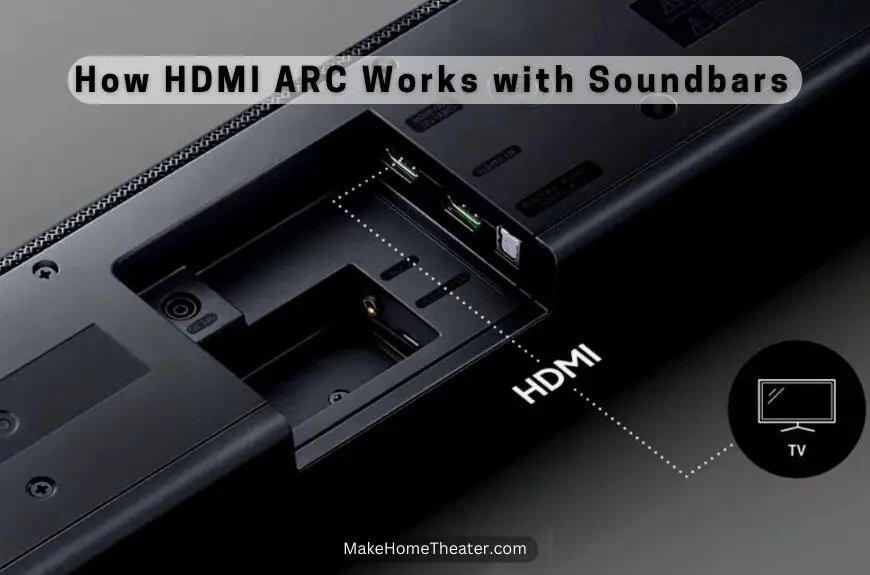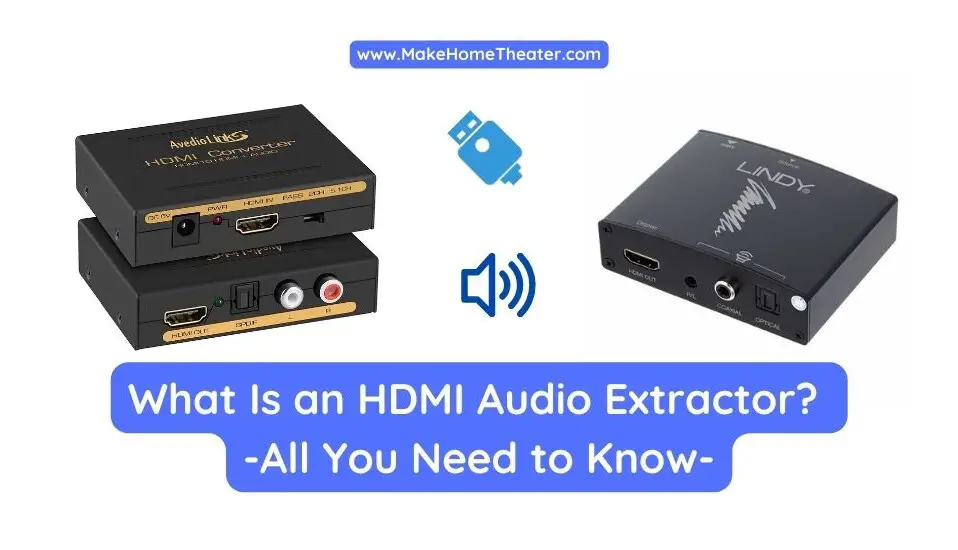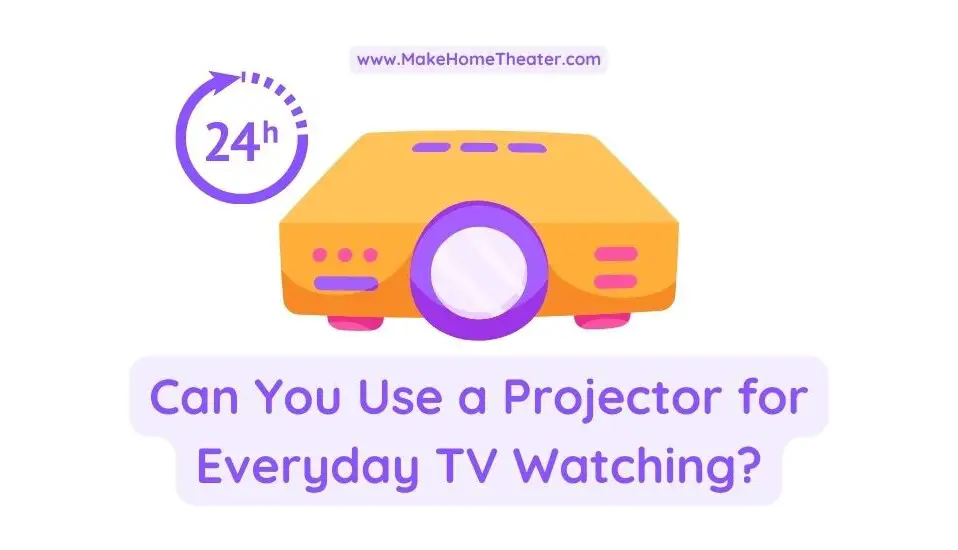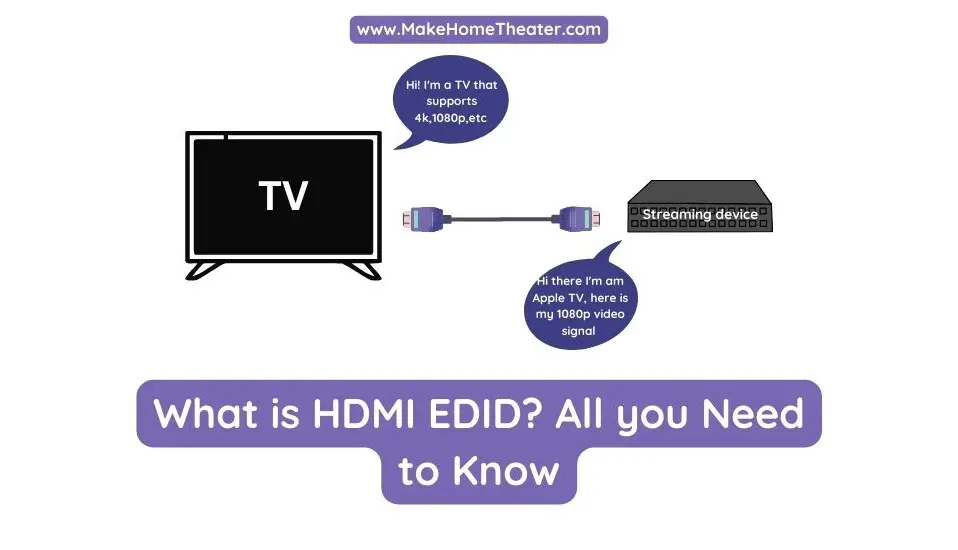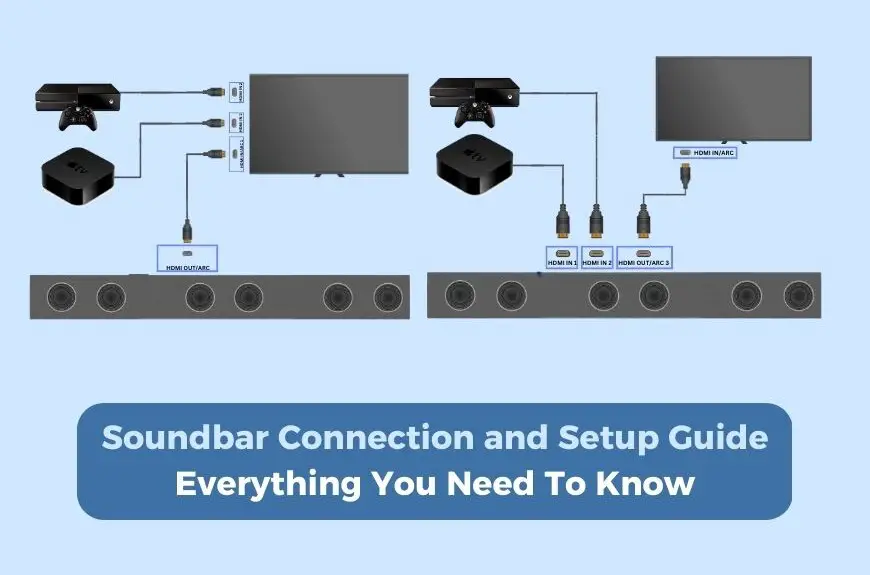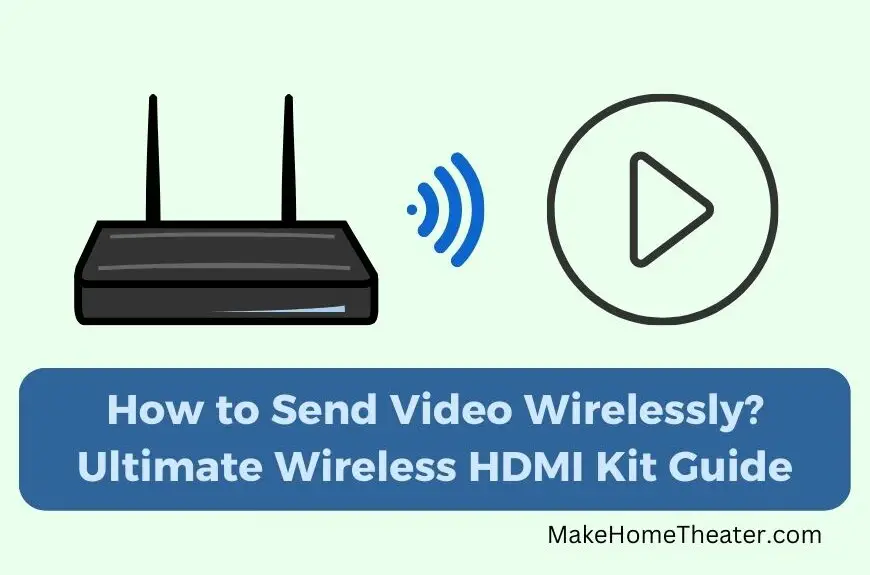When it comes to optimizing your home theater, the Bose SoundTouch 300 and Sonos Playbar are two soundbars worth considering. They both have similar pricing and features, but there are some key differences to consider. So Bose SoundTouch 300 vs. Sonos Playbar, which is the best to choose?
First, the design of the two soundbars is different. The Bose SoundTouch 300 is built to be used with the latest technology, while the Sonos Playbar is designed to be simple and high-quality. In terms of technology, the SoundTouch 300 is more advanced and may outlast the Playbar.
The SoundTouch 300 has HDMI ARC support, which allows for integration with 4K TVs. The Sonos Playbar only has a basic HDMI output. Additionally, the sound quality of the two soundbars is slightly different. The Bose SoundTouch 300 has a wide sound stage but lacks deep bass, while the Sonos Playbar has better bass but a narrower sound stage.
When it comes to compatibility, the Bose SoundTouch 300 is best used with other Bose products, specifically their wireless subs and speakers. The Sonos Playbar only works with other Sonos products. Both soundbars connect to devices over Wi-Fi, but the SoundTouch 300 also includes Bluetooth compatibility, allowing for connections with third-party speakers.
In the end, the choice between the two soundbars comes down to personal preference and what features are important to you. Consider what wattage you need, how the soundbar will complement your current and future home theater products, and whether it’s compatible with your TV. Both the Bose SoundTouch 300 and Sonos Playbar are high-quality soundbars from trusted brands, so it’s a matter of which one is the right fit for you.
Table of Contents
What differentiates the SoundTouch 300 from the Sonos Playbar?


The Bose SoundTouch 300 and the Sonos Playbar are both soundbars that offer a similar range of features. Both can add a wireless subwoofer and rear surround speakers, and they are typically priced similarly. They both integrate seamlessly with Wi-Fi, giving music lovers the ability to stream music from popular apps at any time. However, they also have a few differences.
Design
Design-wise, the Bose SoundTouch 300 has a sleek design, but it lacks buttons on the soundbar itself. This means that if you lose the remote, it can be difficult to control. In contrast, the Sonos Playbar has touch controls on the device itself, including play/pause, skip, and volume controls. The Bose SoundTouch 300 is also quite wide at 97.9 cm, making it best for 50-inch or larger TV screens. The Sonos Playbar is 90 cm wide and works well with 42-inch TVs and larger.
Sound Quality
When it comes to sound quality, the Bose SoundTouch 300 is known for its wide sound stage and good performance across a range of music genres. The Sonos Playbar, on the other hand, has a crisp and powerful sound from nine class-D digitally amplified speakers, including six mid-range speakers and three tweeters. This results in deep, rumbling lows and immersive waves of sound. However, the Bose SoundTouch 300 doesn’t have as deep a base quality, so you may want to add a subwoofer for the perfect sound.
Integrations
Integration with your current TV and speakers is another area where the two soundbars differ. The Bose SoundTouch 300 is designed to connect to TVs with HDMI ARC support, allowing for 4K pass-through and support for Dolby Digital and DTS decoding. It also has an optical digital connection. The Sonos Playbar, on the other hand, connects to TVs with an optical audio output and supports Dolby Digital and stereo. It is also compatible with all amplified and non-amplified Sonos products.
In conclusion, both the Bose SoundTouch 300 and the Sonos Playbar offer great sound quality and a range of features, but they have some key differences in design, sound quality, and integration with other devices. Each one may be a better fit for different needs and preferences.
Bose SoundTouch 300
The Bose SoundTouch 300 is an older version of the SoundTouch soundbar product line, with the Soundbar 700 being the updated version. However, it is priced slightly lower and still offers the same high-quality sound system as the 700. This soundbar is optimized to work best with Bose products, such as the SoundTouch multiroom system, and TVs that are HDMI ARC-enabled. The SoundTouch 300 is designed to provide expansive, clear, and high-quality sound, while being intuitively designed to be very attractive and easy to integrate into your home entertainment system.
Features
The Bose SoundTouch 300 boasts a sleek and attractive design, featuring a tempered glass top and a mesh front with input LEDs in the top corner. It can be mounted on a wall or placed on a surface, and it is a 3.0-channel soundbar that utilizes PhaseGuide technology to produce a wider soundstage than you would expect from a soundbar. The QuietPort technology adds a bit of bass, even without a subwoofer.
One of the key features of the Bose SoundTouch 300 is its integration with the Bose SoundTouch Wi-Fi music system, allowing users to stream their favorite music services, such as Spotify, Apple Music, and Pandora, directly from the soundbar for maximum sound quality. Additionally, it is compatible with SoundTouch 10 and newer speakers and can also be connected to any speakers via Bluetooth.
Another major advantage of this soundbar is its HDMI ARC-enabled output which provides 4K pass-through, as well as Dolby Digital and DTS decoding. It also comes with a limited warranty, giving users peace of mind in case of any issues.
Pros
The Bose SoundTouch 300 has several advantages that make it a great choice for a soundbar. In terms of design, the soundbar is physically sleek and high-quality, with a slim and modern look. It is wide enough to work well with large TVs and to produce a maximum soundstage width. Additionally, it supports 4K HDMI, which means it will be compatible with your TV for a long time, even if you upgrade to a 4K TV in the future.
The SoundTouch 300 is also highly versatile in terms of connectivity. It can connect to other devices through Wi-Fi and Bluetooth, making it easy to hook up to non-Bose branded wireless speakers. It is also compatible with Amazon Alexa, allowing you to control it using your voice.
The sound quality of the Bose SoundTouch 300 is also noteworthy, producing clear and expansive sound for a variety of content, whether you’re watching a movie or listening to music. Additionally, the sound quality can be enhanced further by adding surround sound speakers and a subwoofer. Overall, the Bose SoundTouch 300 is a great soundbar for anyone looking for a sleek and modern design, versatile connectivity options, and high-quality sound.
Cons
The Bose SoundTouch 300 has a few downsides to consider before making a purchase. One of the main drawbacks is the lack of deep bass in the soundbar’s sound. If you’re a fan of bass-heavy music, you’ll need to purchase a separate Bose subwoofer, which can be expensive. To achieve the maximum sound quality, you’ll also need to add surround speakers and a subwoofer, which can add an additional thousand dollars to the cost. Some other soundbars on the market may offer similar sound quality at a lower cost.
Another issue with the SoundTouch 300 is the lack of controls on the soundbar itself. If you lose the remote, you will not be able to control the power or volume without it, which can be a problem. Additionally, the soundbar does not have a 3.5mm input or headphone connection.
Lastly, the setup process for the Bose SoundTouch 300 can be confusing and time-consuming. It involves connecting a microphone-enabled headband device to the back of the soundbar and calibrating the system by listening to various sounds throughout the room.
Specs
| Dimensions | 4.2 x 38.5 x 2.2 inches, 12.6 lbs |
| Body | Black. Made with glass, metal, plastic |
| Connections | HDMI input, HDMI output with ARC, SPDIF input, USB, network, subwoofer output |
| Network | Bluetooth, Near Field Communication (NFC) and Wi-Fi |
| Supported Audio Formats | Dolby Digital, DTS decoder |
| Video Source Compatibility | HDMI and 4K pass-through |
| Warranty | 1-year limited warranty |
The Bose SoundTouch 300 comes with a variety of accessories in the box. These include:
- The SoundTouch 300 soundbar
- A universal remote control
- 2 AAA batteries for the remote
- An ADAPTiQ headset, which is used for the initial setup and calibration of the soundbar
- A power cord to connect the soundbar to an outlet
- An HDMI cable to connect the soundbar to your TV
- An optical cable to connect the soundbar to your TV or other device.
Sonos Playbar

The Sonos Playbar is a premium soundbar that is designed with music enthusiasts in mind. It offers a wide range of features and boasts exceptional sound quality that can greatly enhance the home theater experience when paired with HDTVs. Unlike traditional soundbars that often fall short in terms of sound quality, the Sonos Playbar is equipped with multi-faceted, high-end speakers that are designed to impress. The soundbar is intuitively designed and its features are tailored to deliver an immersive and enjoyable listening experience.
Features
The Sonos Playbar is equipped with nine digital amplifier speakers, including six mid-range speakers and three tweeters, that work together to provide a cinematic sound that is great for movies, TV shows, music, sports, and games.
It can connect to Amazon Echo, Dot, or any Alexa-enabled device, allowing for hands-free music listening and control. The Playbar can also be controlled using your current TV remote or through the Sonos app on a smartphone or smart device.
The Playbar has a simple two-cord setup – one for the power cord and one optical input for the TV – and can be mounted on a wall or placed on a surface. It has touch controls for play/pause, skip, and volume control. It can also be paired with two surround sound speakers and a subwoofer for a 5.1 surround system.
The Sonos Playbar also comes with the Trueplay software on the Sonos app, which allows for custom speaker-tuning. It measures the room and fine-tunes sounds to fit the space optimally. The Sonos Playbar also includes speech enhancement options and a night mode. It is compatible with Dolby Digital and stereo formats.
Pros
The Sonos Playbar’s main and most impressive feature is its nine class-D digital amplifier speakers, which are extremely efficient in the way they distribute and consume power. These speakers are able to replace your TV’s built-in speakers, and deliver crystal clear waves of sound with deep lows. The speakers are also designed to deliver directionality and create a wide soundstage that offers an immersive listening experience.
The Playbar is easy to use for anyone, thanks to its intuitive design. The Sonos app provides complete music control, and the setup process is straightforward and easy to follow. The Playbar is compatible with a wide range of devices and can play everything from cable, gaming consoles, satellite, Blu-ray players, and more. It can easily stream and listen to on-demand internet radio, 30+ music streaming services, podcasts, audio books, or your collection of downloads.
Cons
One of the main drawbacks of the Sonos Playbar is its lack of HDMI ARC support, which is a feature that is present in the Bose SoundTouch 300. If you own a 4K TV or a newer TV, this feature is important and can be a dealbreaker for some. This also shows that the Playbar is a little older than the SoundTouch 300.
Another drawback of the Playbar is its lack of Bluetooth compatibility. This can be frustrating as it means that if a friend wants to stream music through the Playbar using their phone, they will need to download the Sonos app or use your device. They cannot simply connect via Bluetooth. Additionally, you cannot hook up any third-party wireless speakers to the Playbar via Bluetooth, unlike the SoundTouch 300.
Lastly, the Sonos Playbar is only compatible with amplified and non-amplified Sonos speakers. To create a 3.1 or 5.1 home theater system, you will need to purchase the Sonos Sub or the Play speakers. This can be limiting and can add extra cost to your setup.
Specs
| Dimensions & Body | 3.35 x 35.43 x 5.51 in, 11.9 lbs, black. |
| Power | supply AC 100-240V, 50-60 Hz |
| Connections | Optical input |
| Network | Wi-Fi |
| Supported Audio Formats | Dolby Digital and stereo |
| Video Source Compatibility | HDMI |
| Warranty | 1-year limited warranty |
The package contents of the Sonos Playbar include:
- The Playbar itself
- An AC power cord
- An optical audio cable
- A warranty and regulatory booklet
- A quickstart guide
Which One Should You Choose?
Another important aspect to consider is sound quality. The Bose SoundTouch 300 is known for its super wide soundstage that sounds good with a variety of music genres and watching Monday night football. The Sonos Playbar features a crisp and powerful sound from its nine class-D digitally amplified speakers, which deliver deep, rumbling lows and immersive waves of sound. The Sonos Playbar is also equipped with Trueplay software on its app, which allows for custom speaker-tuning to fit the room optimally.
Lastly, consider the additional features and integrations that each soundbar offers. The SoundTouch 300 is equipped with 4K HDMI support and an optical digital connection. It also has a 3.5mm jack to hardwire a bass module, but it will also wirelessly connect to the Acoustimass 300 wireless bass module and the Virtually Invisible 300 wireless surround speakers for deeper bass and a more expansive surround sound.
On the other hand, the Sonos Playbar is equipped with touch controls on the device itself, Alexa integration and Trueplay software, which helps to fine-tune the sound to fit the room. It also connects to the TV with an optical audio output and compatible with Dolby Digital and stereo.
Ultimately, the choice between the Bose SoundTouch 300 and the Sonos Playbar will depend on your specific needs, preferences, and budget.
Does the value of Either justify its cost?
It is worth noting that both the Bose SoundTouch 300 and the Sonos Playbar are high-end soundbars with a premium price tag. If you are looking for a more budget-friendly option, there are many other soundbars on the market that offer similar features and sound quality at a lower cost. It ultimately depends on your specific needs and preferences, as well as your budget. It’s always a good idea to compare different options and read reviews before making a decision.
To Sum Up
The Bose SoundTouch 300 and the Sonos Playbar are both great soundbars that are worth considering if you are already invested in their respective ecosystems. The Bose SoundTouch 300 has a sleek design and supports HDMI ARC, while the Sonos Playbar has a powerful sound and is compatible with all amplified and non-amplified Sonos products. However, both soundbars lack bass quality, and the Bose SoundTouch 300 is more expensive than some other alternatives in the market. Ultimately, you should evaluate your needs, budget and preferences to decide which one is the best for you.


